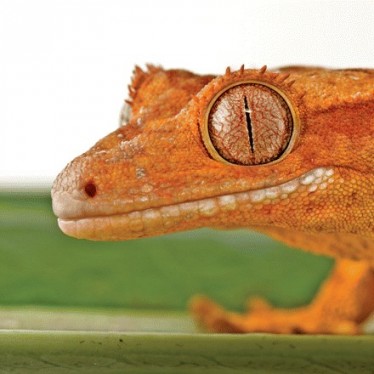Leading gecko expert refutes challenge from Singapore researchers in scientific showdown
Open gallery

After more than a decade of research, biology professor Kellar Autumn probably knows more about what makes geckos stick than anyone in the world. In 2002, he cracked one of nature’s most stubborn codes, discovering how the tiny hairs on the surface of a gecko’s foot allow it to stick to virtually any surface. He also is active in research efforts aimed at producing artificial adhesives that reproduce the benefits of the gecko system.
So, when a Singapore-based research team challenged some of his key findings in 2005, Autumn was surprised and curious, but also ready for the scientific contest that would ensue.
”When I saw these results, I was fascinated because they contradicted everyone’s understanding of gecko adhesion,” Autumn said. “But I was also determined to understand what they really meant.”
That determination resulted in a newly published article, titled “Changes in materials properties explain the effects of humidity on gecko adhesion.” Published in the Journal of Experimental Biology and covered in Science, Autumn’s new study soundly refutes the Singapore team’s theory.
Competing ideas of what makes geckos stick
Geckos are lizards known for their ability to cling to and run at full speed across any surface—on a vertical wall or even on the ceiling—without falling. They are held firmly in place by virtue of their remarkable toes, each of which possesses millions of dry, branched hairs much smaller than those of mammals. The hairs are comprised of beta-keratin, which makes them stiffer than mammalian hairs and thus theoretically unsuitable as adhesives.
Nevertheless, in 2002 Autumn’s team discovered that each of these tiny hairs sticks to the wall by weak intermolecular forces known as van der Waals forces (after a 19th century Dutch physicist), paving the way for a new class of “gecko adhesives.”
The research performed by the Singapore team resurrected a centuries-old theory that geckos stick by capillary forces, requiring their feet to be moist. According to the Singapore researchers, the degree of adhesion was sensitive to environmental humidity. They proposed that tiny droplets of water condensed around the hairs could in fact be the primary adhesion mechanism. The surface tension of these droplets would create a suction-like force between the hair and a surface through “capillary action,” which could explain the humidity dependence of the forces.
If true, the capillary hypothesis threatened to turn much of the science Autumn had discovered on its head.
So, which explanation, van der Waals forces or capillary forces, is correct? Autumn and his team set out to determine if years of careful research were now invalid.
“The capillary argument didn’t make sense to us, since the gecko’s foot-hairs actually repel water,” said Jonathan Puthoff, a postdoctoral researcher on the Autumn research team and lead author of the study. “Anyone who has ever seen an insect stride across the surface of water has seen this ability in full effect. Furthermore, there are geckos that dwell in arid regions and can climb just fine with little atmospheric humidity. So, we went in search of an alternative explanation for the observed humidity effects.”
“This is a great example of how science progresses,” Autumn said. “Even though the Singapore group’s hypothesis about capillary adhesion is wrong, it led us to make some new and exciting discoveries.”
Scientific challenge inspires new product ideas
The Lewis & Clark team’s new results include measurements of the adhesive forces on gecko foot-hairs that show a definite increase in adhesion with humidity, even under conditions where the attractive water-based effects are expected to be weakest. Furthermore, this increase in adhesion is strongly correlated with humidity-induced changes in the properties of beta-keratin.
“Keratin becomes a considerably softer material when exposed to atmospheric humidity,” explained team member Mike Prowse, a graduate student at the University of Washington. “Compare how much easier it is to trim your fingernails after a bath then when they are dry; this difference is a result of a moisture-related change in the mechanical properties of the tissue.”
Puthoff used a mathematical model to test if the changes in keratin caused by humidity can explain the increase in adhesion.
“We found that at high humidity, the softer foot hair dissipates more energy than a dry one, and this makes it stickier,” he said.
Autumn believes the research has far-ranging implications.
“This is an important step forward in understanding how the environment influences the gecko’s lifestyle,” he said. “It might offer clues to gecko evolution in diverse climates.”
The study might offer some technological dividends as well.
“The production of artificial, gecko-like adhesive tape can benefit from a better understanding of the original, natural system,” Autumn said. “By incorporating this additional material dimension into how we think about structured adhesives, we open up some exciting design possibilities.”
More Newsroom Stories
Public Relations is located in McAfee on the Undergraduate Campus.
MSC: 19
email public@lclark.edu
voice 503-768-7970
Public Relations
Lewis & Clark
615 S. Palatine Hill Road MSC 19
Portland OR 97219

